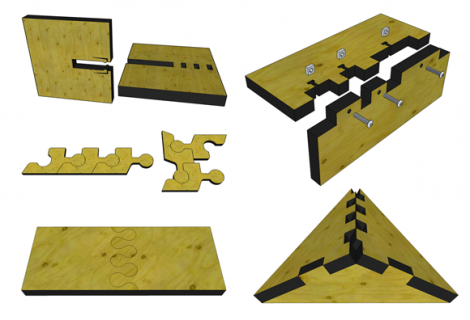
It’s hard to be an expert at everything, but this collection of wood joinery techniques will make your next project look like you’ve just finished your degree in mechanical engineering. They’re targeted for use in projects where thin sheets of plywood are CNC cut to make enclosures and parts. [Sean Ragan] mentions that these are not new, but we haven’t come across such a large collection of examples as this.
The joints shown above address a series of different needs. You’re probably already familiar with the joint on the bottom right which makes nice corners for a box, providing a lot of surface area for gluing. But just above that is a simple variation on the idea which includes slots for square nuts. This type of mechanical fastener brings strength while keeping the option to take the joint apart again
To the top left you can see a design that includes a snap lock. As the two pieces are slotted together, the barbs flex until they find their mating openings and hold the pieces firmly together. Below that are some bulbed finger joints which don’t need glue to hold themselves together.
[Sean’s] post goes on and on with these designs. He even covers the laser-cut bendable hinges which we are quite fond of.















hah, i just finished a table a few weeks back that i made using some of those wood joints from the jochen gros’s files. gotta love not using nails and screws!
In woodworking it’s called jointery (note the ‘t’). Google it and ye shall receive. It’s the stuff that fine woodworking is made of. It is considered very bad form to use any metal at all. I am partial to through mortice and dowel joining.
Don’t fret if you are unwilling to blow money on cnc work, all these joints and more have been created by hand. I’d wager if you look around your grandparents house you will see examples. Half blind dovetail seems hard by hand until you realize why it became popular in the first place centuries ago: your angles don’t need to be very close to keep a secure fit, plus the joint is mostly hidden anyway. Should you have access to a tablesaw and scrollsaw, you can make these joints faster than starting from a blank cam file.
nope… joinery.
Totally +1
Heh, I wish they taught useful things like that in mechanical engineering.